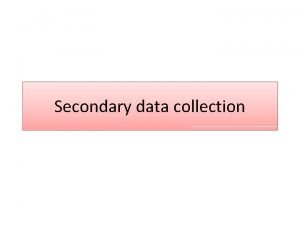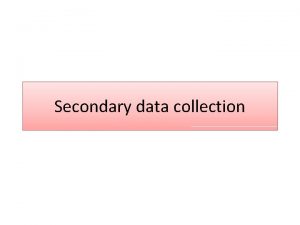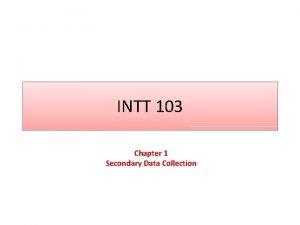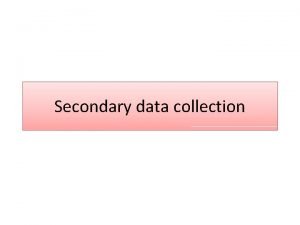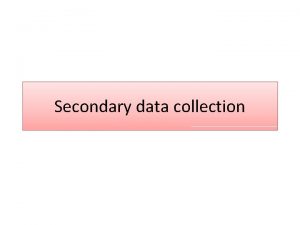Secondary Data Chapter 7 Secondary Data vs Primary








- Slides: 8

Secondary Data Chapter 7

Secondary Data vs. Primary Data • SECONDARY DATA • Existing information collected for some purpose other than the immediate study at hand • PRIMARY DATA • Information collected specifically for the purpose of the investigation at hand SLIDE 7 -1

The Balancing Act with Secondary Data Inexpensive Unknown accuracy Can be secured quickly May not fit the problem SLIDE 7 -2

Primary Source vs. Secondary Source • SECONDARY SOURCE • A source of secondary data that did not originate the data but rather secured them from another source • PRIMARY SOURCE • The originating source of secondary data SLIDE 7 -3

Types of Secondary Data Internal External - Published - Commercial SLIDE 7 -4

Examples: Internal Secondary Data • Sales invoice • Salesperson’s call reports • Salesperson’s expense account • Credit memos • Warranty cards • Marketing research reports SLIDE 7 -5

Examples: External Secondary Data • • • PUBLISHED General works Directories Periodicals Statistical sources Financial records • • • COMMERCIAL Geodemographic data Diary panel data Store audit data Scanner data Advertising exposure data SLIDE 7 -6

How to Get Started When Searching Sources of Secondary Data 1. Identify what you want to know and what you already know about your topic. 4. Compile the literature you have found. Rework your list of key words and authors if necessary. 2. Develop a list of key terms and names. 5. Consult the reference librarian. 3. Search several of the general guides, directories, and web sites for papers and/or reports. 6. Consult the various directory guides. 7. Identify authorities in the area and consult them. SLIDE 7 -7


